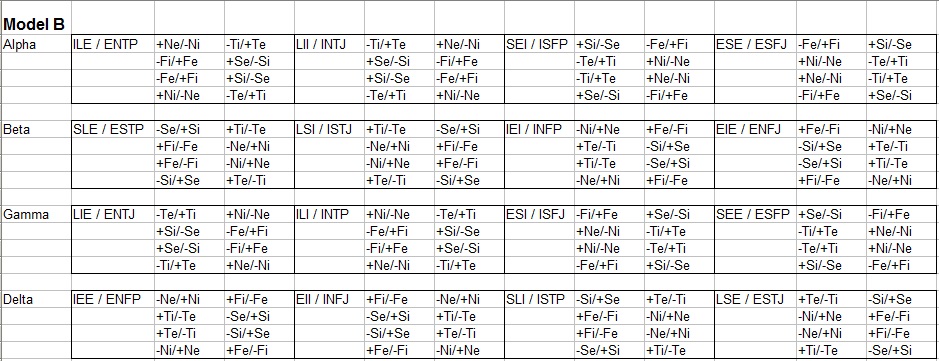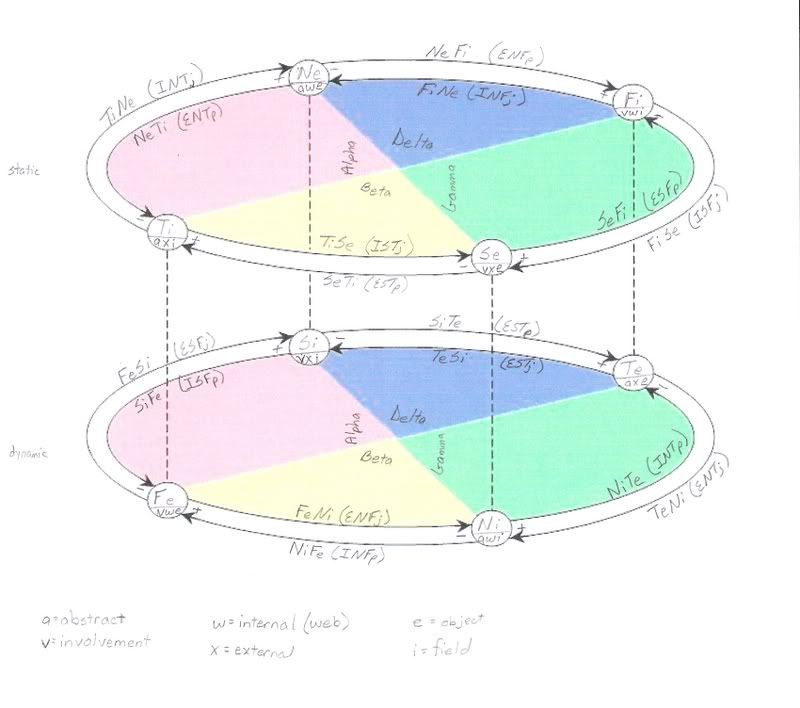I just wanted to share something cool I discovered: Model A can be viewed as a cube.
xs_cube.png
This is one of four possible representations, called the xs-cube (to be explained in a moment). You can think of types as being represented by positions of the cube, with, say, the ego block being the closer edge on the bottom. So the one pictured represents LSE. (However, the choice of edge is arbitrary.)
Each relationship is a transformation of the cube - a combination of reflections and rotations. If you apply that transformation you will produce the type that has that relationship with the type you started with.
-the extinguishment (x) relation is a reflection across the xy-plane
-supervision (s) is a 90 degree clockwise rotation about the z-axis
-mirror is a reflection across the yz-plane
-duality is the antipodal map which sends each point to the point opposite from it
etc.
There are three other possible cubes. Each one requires a choice of which "rings" to use for the 90 degree rotation (which sends a point to an adjacent point) - either benefit or supervision - and a choice of what to use for the reflection that sends a point to the third adjacent point - and this can only be duality or extinguishment for mathematical reasons.
This allows thinking of supervision and benefit rings as actual
rings, in the sense that you can continuously rotate the cube from one type to its supervisor - or benefactor, but not both. This suggests that perhaps there is a sense in which one can use "in-between" IM elements. There is also a 4-dimensional representation on a hypercube, aka tesseract. It's a bit more difficult to draw a picture of, though.






 Reply With Quote
Reply With Quote










